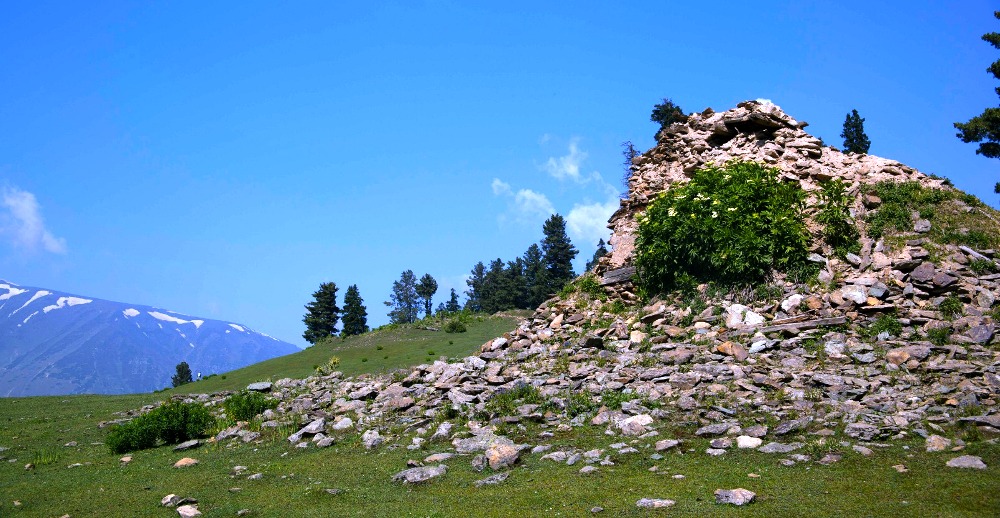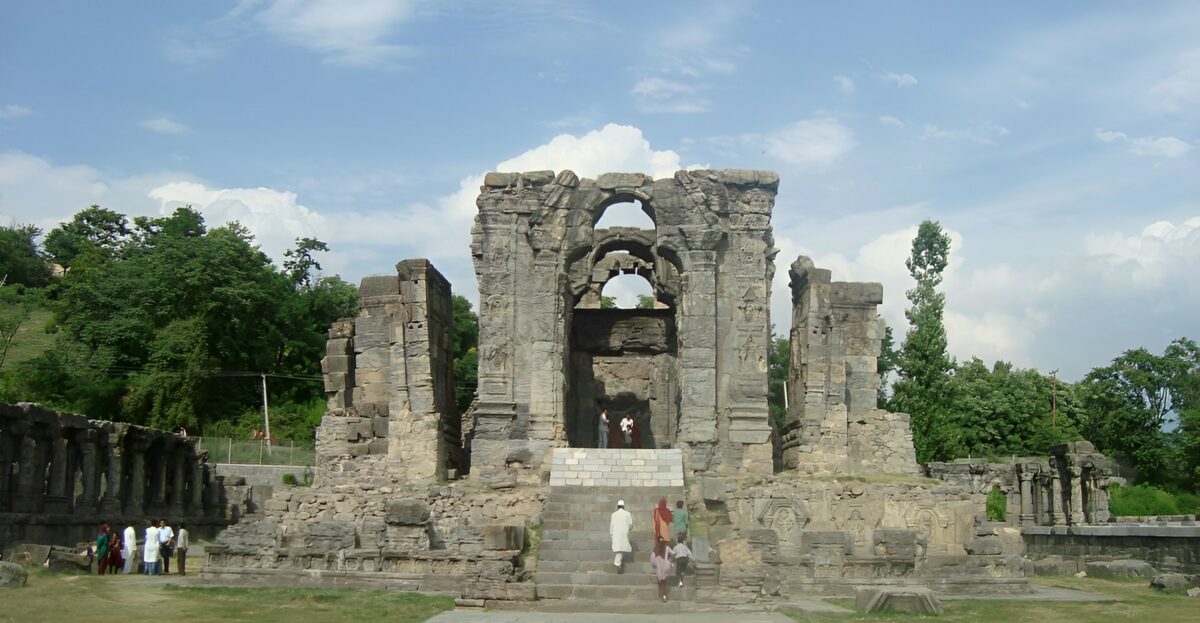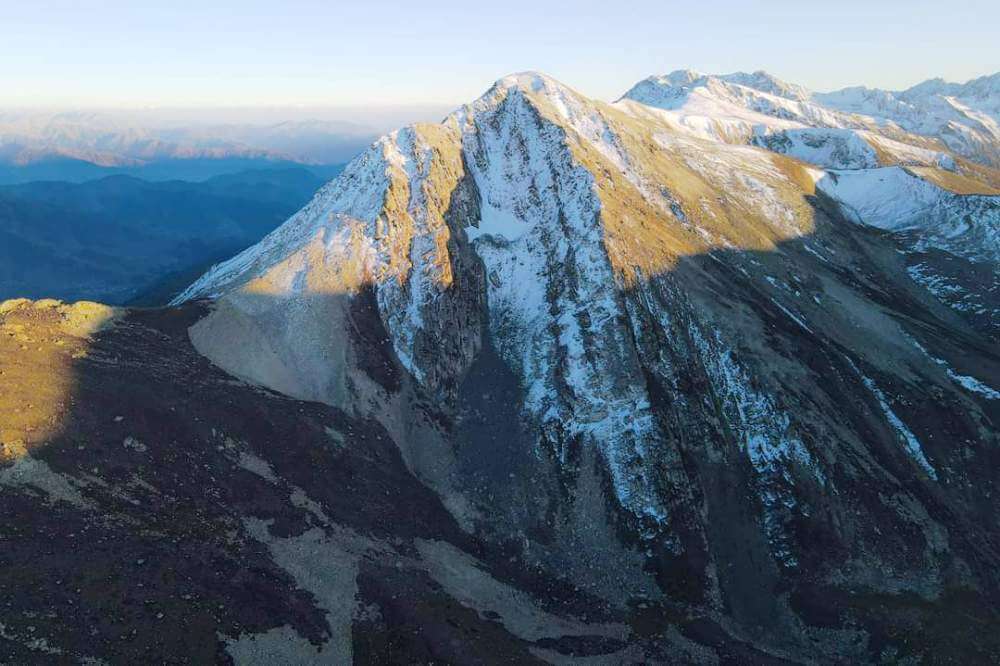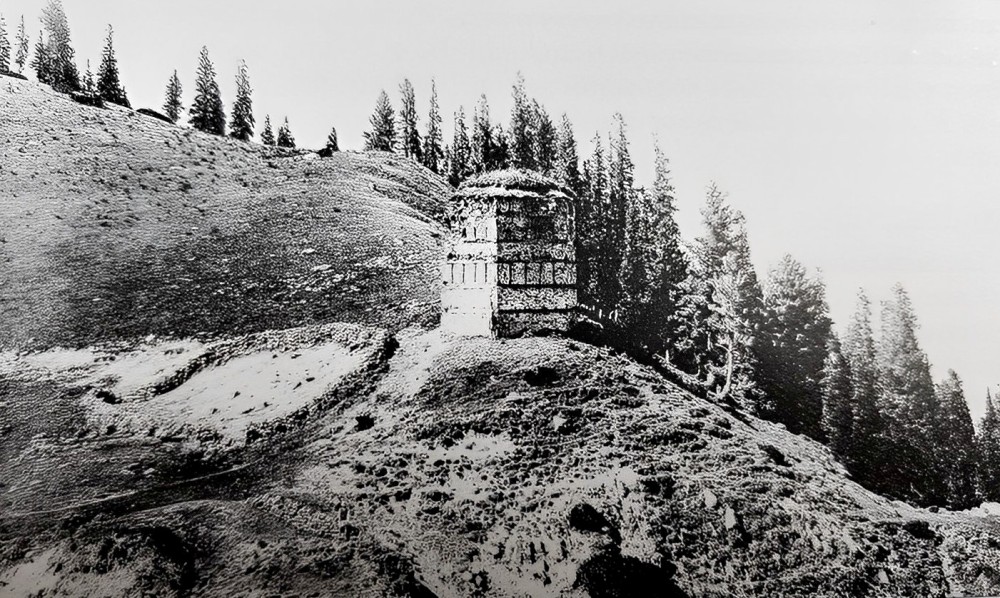Mehmood Gaznavi tried to wrest Kashmir within the eleventh century twice and failed. The failed invasions, nevertheless, gave the Gaznavid court docket plenty of details about the financial system, geography, politics and society of Kashmir. One of many beneficiary court docket students was al-Biruni, who gave detailed and unbiased details about the Kashmir of Diddha, Latadatiya and Sangramadeva, writes Muhammad Nadeem
Abu Rayhan Muhammad ibn Ahmad al-Biruni (973-1048 CE) was a Muslim scholar and polymath who made vital contributions in various fields like physics, arithmetic, astronomy, and pure sciences. He additionally distinguished himself as a historian, chronologist, linguist, and world’s first anthropologist.
Al-Biruni was born in Khwarazm (now falls in Uzbekistan and partly in Turkmenistan) in 973 CE. He doubtless began his research at an early age underneath the well-known astronomer and mathematician Abu Nasr Mansur and was in all probability engaged in his scientific work from across the age of 17. By 995 CE, al-Biruni had already written works on cartography and map projections.
As a consequence of civil wars within the Islamic world within the late tenth and early eleventh centuries, al-Biruni needed to flee his homeland round 1004 CE. His actual whereabouts on this interval are unknown, however he doubtless lived in poverty for a while. He interacted and labored with different astronomers like al-Khujandi throughout this era.
Subsequently, al-Biruni travelled extensively, as indicated by the astronomical occasions he described from completely different locations. Round 1004 CE he returned to his homeland the place the ruler Abu’l Abbas Ma’mun supported his scientific endeavours – he constructed an instrument to watch photo voltaic transits and made 15 observations. Nevertheless, after al-Ma’mun’s execution, al-Biruni once more needed to depart the area.
In Captivity
Al-Biruni’s seize in 1017 CE by Mahmud of Ghazni (Gaznavi) resulted from a posh interaction of political battle, navy invasion, and the scholar’s mental standing. Ghazni, a Turkic ruler, invaded Khwarezm, Al-Biruni’s homeland, destabilising the area. As a consequence of his household’s influential positions and his affiliation with the ruling elite, Al-Biruni turned a goal for the invading forces. The circumstances of his seize stay unclear, with strategies starting from being taken alongside others through the invasion to being particularly sought out for his scholarly repute, presumably whereas travelling.

Al-Biruni’s compelling scholarship performed a pivotal function in his seize, as Mahmud of Ghazni recognised the scholar’s worth and transported him to Ghazni. Opposite to harsh therapy, Al-Biruni was revered and supplied sources for scholarly pursuits. Regardless of being technically captive, he flourished intellectually in Ghazni, getting access to libraries and students. The seize, traumatic but transformative, afforded Al-Biruni distinctive alternatives to discover various cultures and religions. The episode, marked by political intricacies, familial affiliations, and scholarly renown, turned a turning level in Al-Biruni’s life, resulting in enduring contributions throughout numerous fields of data.
As a captive of the Mahmud Ghazni, he visited India in 1018 CE and certain studied unique Indian texts, translating some into Arabic. His observations about Indian faith, tradition and science have been recorded in his well-known work Tarikh al-Hind. With Mahmud’s demise, his son Mas’ud handled al-Biruni higher and allowed him to journey freely.
Indological Odyssey
As a part of the cellular court docket of Sultan Mahmud of Ghazni (998–1030), al-Biruni spent over a decade travelling broadly throughout northwest India, from modern-day Afghanistan to the Punjab. His first-hand observations on the geography, historical past, and tradition of medieval India, recorded in magisterial works like Tārīkh al-Hind (Historical past of India) and different works on Tarikh–al-Hind, have justly earned him recognition as an early pioneer of Indology.
His detailed discussions of Kashmir in these texts show his place as a discerning collector of data on the area’s previous.

Relatively, he additionally relied extensively on Sanskrit students and Brahmins encountered in Punjab and the unstable Kashmir borderlands for geographical and cultural perception into Kashmir. His in depth exchanges with “Kashmirian students” and references to particular Kashmiri mental figures like Ugrabhuti affirm his privileging of Hindu informants from Kashmir and wider India. Given boundaries to direct entry, al-Biruni’s understanding of eleventh-century Kashmiri society derives from his expertise in addition to the interpretative lens of those peripheral intermediaries and unmediated commentary.
In his geographical appraisal of the area, al-Biruni exhibits cognisance of Kashmir’s distinctive topography and geostrategic place alongside very important commerce corridors connecting the Indian subcontinent with Inside Asia. He aptly characterises Kashmir as a “plateau surrounded by excessive inaccessible mountains”, which facilitated the valley’s historic autonomy but in addition isolation from exterior forces.
Al-Biruni demonstrates familiarity with vital passes just like the Zoji La, which he identifies as a gateway “connecting the Kashmir valley with China and Tibet through Ladakh”. His labelling of neighbouring mountain chiefs because the Bolor Shahand Wakhan Shah precisely correlates with recognized adjoining principalities in Baltistan and Wakhan alongside Kashmir’s unstable western frontiers.
Moreover, al-Biruni notes Kashmir’s historic resistance to the surface incursion, stating “they take a lot care to maintain a robust maintain upon the entrances and roads main into it. In consequence, it is rather tough to have any commerce with them” (Tārīkh al-Hind). This elucidates Kashmir’s seemingly anomalous preservation of independence underneath Hindu rulers within the period of Sultan Mahmud, who regardless of quite a few makes an attempt remained unable to beat the valley.
Kaleidoscope of Kashmir
In chronicling Kashmir’s early medieval Hindu rulers, al-Biruni demonstrates substantial reliance on Sanskrit sources and oral accounts communicated by his Kashmiri interlocutors. He refers back to the Hindushahi king Muttai Lalitaditya Muktapida (724-760 CE), stated to have “gained a victory over the Turks” in the direction of forging a pan-Indian empire (Tārīkh al-Hind). Moreover, al-Biruni paperwork extra modern Kashmiri sovereigns like Queen Didda (980-1003 CE) and Sangramadeva (1003-1028 CE), the latter aligned with timeframes for his analysis in northwest India (Tārīkh al-Hind).
Al-Biruni reserves particular reward for the Hindushahi ruler Anandapala (1002-1010 CE), highlighting a narrative that “exhibits that he was not solely a realized man himself but in addition patronised the realized and inspired studying” (Tārīkh al-Hind). This optimistic portrayal accords with the pro-Hindu Shahi bias of the Rajatarangini chronicle, reflecting al-Biruni’s internalisation of courtly Sanskrit views on Kashmir’s previous communicated by his Brahmin contacts.
Moreover court docket historical past, al-Biruni displays admiration for the scientific traditions of medieval Kashmir, often citing astronomical texts and mathematical authorities hailing from the valley. Kashmir-centric scientific works listed by al-Biruni characteristic titles like Karaṇa-sâra, Sarvadhara and an unnamed Calendar from Kashmîr, alongside repeated references to seminal Kashmiri scientific thinkers, together with Mahadeva Chandrabija and Utpala. The disproportionate prevalence of Kashmiri authors in al-Biruni’s formidable scientific supply record indicators the uniquely excessive regard for Kashmiri scholarship throughout the bigger custom through the eleventh century.
Furthermore, al-Biruni reproduces a basis story tracing the genesis of the indigenous Brāhmī script (termed Siddhamātṛkā) to Kashmir, elucidating his entry to seminal Kashmiri literary traditions past strictly technical materials (Tārīkh al-Hind). Whereas al-Biruni relied considerably on Punjab and Tibet for exact cartographical information, these repeated references however show his real scholarly curiosity in – and deference in the direction of – Kashmiri scientific materials circulating contemporaneously in northwest India.

Kashmir Geography
In Tarikh al-Hind, Al-Biruni highlights Kashmir’s strategic function in bridging Tibetan tradition, Inside Asia, and the Indian subcontinent regardless of restricted entry.
As al-Biruni states a few of his geographical data of the Indian subcontinent is derived from second-hand accounts and textual sources relatively than post-mortem.
“If the latitudes of locations are recognized, and the distances between them have been measured, the distinction between their longitudes additionally could also be discovered…. We ourselves have (in our travels) of their nation not handed past the locations which we have now talked about, nor have we realized any extra longitudes and latitudes (of locations in India) from their literature,” he recorded in his seminal Tārīkh al-Hind. “It’s God alone who helps us to succeed in our objects!”
Political Historical past
In chronicling medieval Kashmir’s court docket historical past, al-Biruni additionally depends on Sanskrit sources and insights from Hindu informants. As outlined in Tārīkh al-Hind, Anandapala’s receptiveness in the direction of the Kashmiri Sanskrit grammarian Ugrabhuti proves his exalted repute as an exemplar of Hindu kingship.
“Among the many circumstances which a king has to fulfil we could point out that he must be accessible to his topics… ought to have a sort coronary heart for them and never disappoint anyone in his hopes…These qualities we discover in most Hindu princes, e.g. in… Anandapâla,” al-Biruni has recorded in his Tārīkh al-Hind. “The next story from his life exhibits that he was not solely a realized man himself but in addition patronised the realized and inspired studying: Ugrabhûti had composed a brief grammar known as Sishyâhitâvṛitti for learners, significantly for kids. Anandapâla favored it extremely and ordered that solely this ebook must be studied by the kids as an introduction, excluding all different books. The order turned compulsory in Kashmîr.”
Al-Biruni’s valorisation of Anandapala for his discerning patronage of the Kashmiri grammarian Ugrabhuti mirrors eulogies for the Shahi dynasty discovered within the Rajatarangini. His laudatory tone signifies assimilation of the pro-Hindu tenor of Sanskrit sources on Kashmir communicated orally by his Brahmin contacts stationed alongside Kashmir’s frontiers. Whereas he may not have straight visited the courts of Kashmir, al-Biruni’s accounts of distinguished rulers like Sangramadeva and Anandapala are spinoff of indigenous Persian views circulating within the early eleventh century inside attain of Ghaznavid domains.
Faith and Sciences
Furthermore, past strictly technical materials, al-Biruni reproduces Kashmiri literary origin myths like that of the indigenous Brāhmī script. As he notes, “Probably the most typically recognized alphabet is named Siddhamâtṛikâ, which is by some thought of as originating from Kashmîr, for the folks of Kashmîr use it. However it is usually utilized in Varânaṣî. This city and Kashmîr are the excessive faculties of Hindu sciences”. His documentation of basis tales linking the genesis of Brāhmī writing with Kashmir signifies real familiarity with – and deference in the direction of – Kashmir’s prestigious Sanskrit literary traditions.

This conspicuous prevalence of Kashmiri scientific and non secular authorities throughout al-Biruni’s writings elucidates Kashmir’s towering standing as a centre of conventional data programs through the late tenth century.
“The centres of Indian studying have been Benares and Kashmir, each inaccessible to a barbarian like Alberuni, however within the elements of India underneath Muslim administration, he appears to have discovered the pandits he wished, maybe additionally at Ghazna among the many prisoners of warfare,” Edward C Sachau outlined in India: An Account of the Faith, Philosophy, insisting Kashmir alongside Varanasi have been the preeminent seat of classical studying “India, so far as recognized to Alberuni, was Brahmanic not Buddhistic.”
For all Kashmir’s defensive seclusion, he concedes its Brahminical tradition sustained dominance as a pole of conventional Indian data – one whose literary artefacts and specialist practitioners circulated broadly regardless of political boundaries, as evidenced by his substantial first-hand entry throughout the Indo-Persian frontiers.
The Mediated View
In his introduction to Tārīkh al-Hind, al-Biruni acknowledges his descriptions of India’s non secular traditions; sciences, tradition, and historical past are essentially based mostly on native steering and unbiased deductions:
“… I’m fairly unable to traverse this street by my very own unbiased investigation…If we entertain the want to evaluate the mental energy of the Hindus with that of the nations of antiquity, we should evaluate it with the mental energy of the very historic world,” he recorded in his Tārīkh al-Hind. “For the Hindus of their heyday have been civilised peoples.”
This passage elucidates how al-Biruni’s influential portrayals of an unique India for Persianate readers inherently filtrate via his cultivated Hindu interlocutors. A lot as with Kashmir, he obtained data of Indic scientific and cultural accomplishments at a number of phases eliminated – as prefiltered via the interpretative lens of accessible native intermediaries. Whereas these extremely mediated second-hand accounts sacrifice experiential authenticity, their very indirection paradoxically spotlights the company of al-Biruni’s Kashmiri Brahmin and scholar informants in actively shaping enduring Persian visions of their homeland.
Conclusion
Abu Rayhan al-Biruni’s seminal Persian histories protect the important document and perception right into a pivotal interval in medieval Kashmir’s previous. His discussions are exceptional for spotlighting the dynamic circulation of cellular Kashmiri students throughout porous political frontiers, securing the transmission of data regardless of Kashmir’s defensive seclusion. Al-Biruni’s testimony endures among the many most incisive early portraits of Kashmir – not in spite however essentially due to his strict reliance on indigenous intermediaries. Although not autoptic, it represents the refracted perspective of native Brahmins and non secular specialists extra precisely than any outsider may hope to match.
#AlBirunis #Perception #Medieval #Kashmirs #Secrets and techniques
Kashmir Tourism
Kashmir News
Source Link



